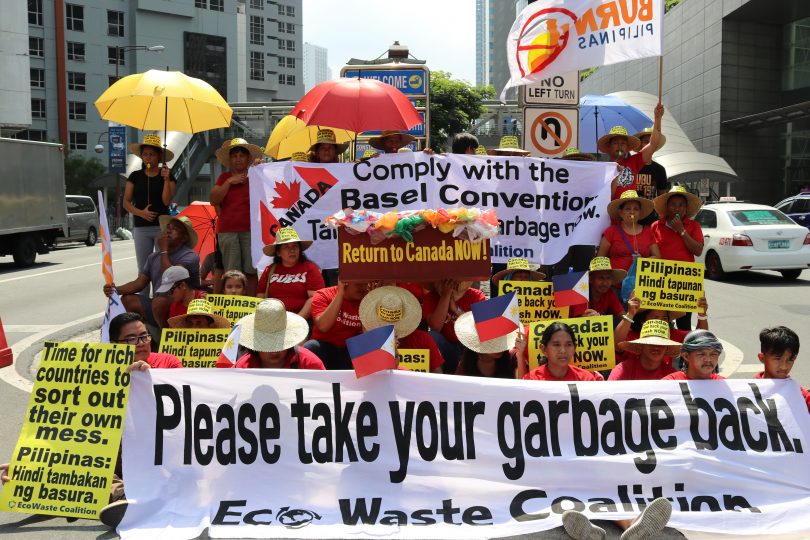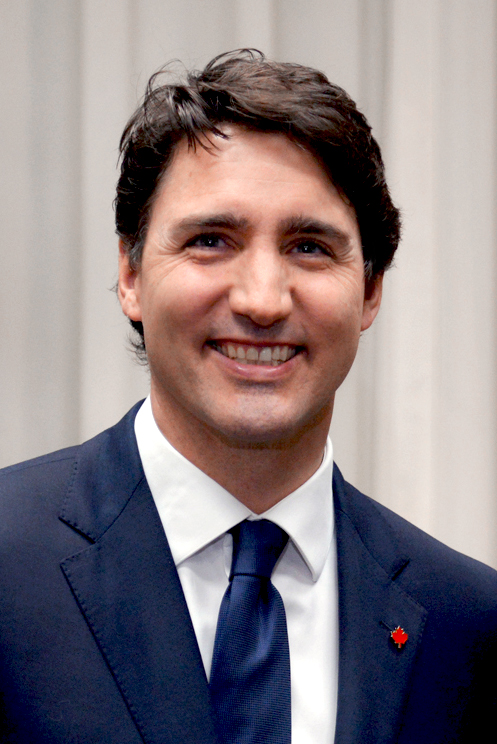Manila, Philippines —(Map)
This article is part of a series on the challenges of recycling.
A six-year struggle between the Philippines and Canada over trash which was shipped as “recycling” is finally ending. Canada has agreed to take back its trash.
In 2013 and 2014, over 100 shipping containers were sent to the Philippines with materials for recycling. But when the containers were opened, government workers found that they were full of trash, including used diapers, mixed in with plastic bottles, bags, and newspapers.

(Source: Spc. Justin Malone, via Wikimedia Commons.)
The company that sent the containers said it was an accident, since it costs far more to send the containers to the Philippines than to dump it in Canada. In all, the containers were believed to hold about 5,500,000 pounds (2,500,000 kilograms) of trash.
People and lawmakers in the Philippines protested, and asked Canada to take the garbage back. Canada said that it would be against the law for it to take the garbage back, since a private company had shipped the garbage, not the government.

(Source: EcoWaste Coalition.)
In 2015, about 26 of the containers were emptied into a dump in the Philippines. After that, there were 69 containers of trash left.
The protests continued in the Philippines, and some people took the problem to court. In 2016, a court in the Philippines said that Canada must take the garbage back.
Behind the struggles between Canada and the Philippines are other problems. The president of the Philippines, Rodrigo Duterte, is a strong and harsh leader. In his fight to get rid of drugs in the Philippines, he has encouraged police to use violence. Many people have died as a result.

(Source: Presidencia de la República Mexicana [CC BY 2.0], via Wikimedia Commons.)
Canada’s Prime Minister, Justin Trudeau, has criticized Mr. Duterte over this and other subjects. Mr. Duterte often reacts strongly when he is criticized.
In 2017, people working near the containers began to complain. The garbage inside was rotting and giving off a terrible stink. Some people thought the garbage might be making the air around the containers dangerous to breathe.

(Source: Wikimedia Commons.)
Mr. Trudeau said the main problem with taking the shipping back was figuring out who was going to pay. The other problems with the law had been sorted out. In 2016, Canada changed its laws so companies have to take responsibility for the recycling and garbage they ship.
In April of this year, Mr. Duterte told reporters that Canada had to get their trash out, “or I will sail to Canada and dump their garbage there.” Mr. Duterte gave Canada a deadline of May 15.

(Source: KING RODRIGUEZ/Presidential Photo, via Wikimedia Commons.)
Canada agreed to take the trash back and to pay for shipping. But when Canada missed the deadline, Mr. Duterte called his representatives back from Canada as a protest.
The trash is now set to sail back to Canada on May 30. The trash will be burned.

(Source: Teddy Locsin Jr., via Twitter.)
The Philippines is just one of many countries in Southeast Asia which have gotten shipments of “recycling” which are actually full of garbage.
In Malaysia, Environment Minister Yeo Bin Yee invited reporters to watch yesterday as several containers of “recycling” were opened. The containers, which held many things besides recycling, belonged to countries like Canada, Australia, the US, China, Japan and Saudi Arabia.
Ms. Yeo said, “I think you need to take back your rubbish.”
😕
This map has not been loaded because of your cookie choices. To view the content, you can accept 'Non-necessary' cookies.
